
Bacteria: Our wastewater treatment plant works like a rover. Our aeration basins have two kinds of water:
- Gently flowing water that does not have a lot of oxygen
- White water that has lots of oxygen
We pump lots of compressed air into some of our aeration basins to make them frothy, like white water.
Some bacteria like white water better. We need both kinds of bacteria to clean the water.
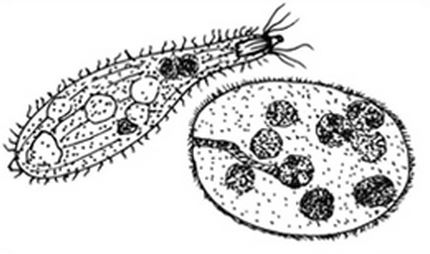
Swimming Ciliates: These one-celled microorganisms are covered with cilia, or hair-like projections. The cilia are used to move the ciliate around and to capture food. Food vacuoles are formed which are like little membrane sacks that store food as well as digesting it.
The swimming ciliates reproduce by dividing, but can also share DNA with another cell before dividing.
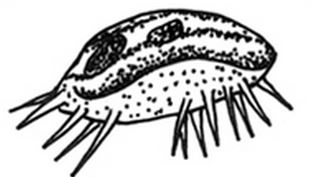
Crawling Ciliates: Crawling ciliates are like swimming ciliates except that their cilia are found on the lower surface of their body. The cilia has also fused together to form what is called “cirri” or thicker cilia. These cirri look like legs and they are used for crawling. The crawling ciliates are not very good at swimming.
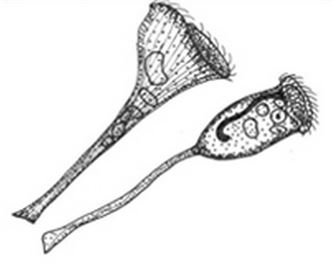
Stalked Ciliates: Stalked ciliates are single-celled organismsthat grow a stalk or filament that can rapidly coil up like a spring to avoid danger.
These cells reproduce by division into two daughter cells. One of the cells will keep the stalk, but the other will become a free-swimming cell until it finds a place to attach. It will then grow a stalk and stay there. Like other ciliates, these cells can share DNA with another cell before division.
To find food, stalked ciliates use the cilia which are located around the top of the cell.
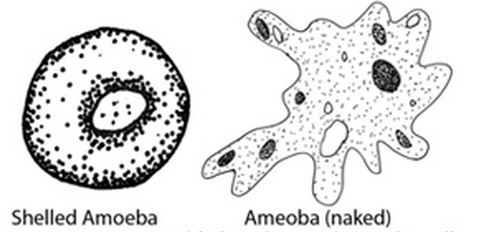
Amoebas: When amoebas sense food nearby they extend a pseudopod (false foot) and surround the food, bringing into their cell.
Shelled amoebas make a shell either by secreting chemicals or by collecting particles to build the shell. Spaces are left in the shell so pseudopods can move past the shell and into the water to reach the food.
Amoebas eat bacteria, algae, and other single-celled organisms.

Flagellates: These single-celled organisms move by whipping around their flagella, a threadlike projection from the front of the cell.

Water Bears: Although difficult, it might be possible to see a water bear without a microscope. These little animals can be as large as 1mm or about one thirtieth of an inch. They do not swim and prefer to crawl. They suck the juices of plants or small animals.
Water bears are amazing animals worth study. Under extreme conditions, the animals can reduce body moisture from 85% down to 3%. They can survive in this state for years. In 2007, water bears survived a trip into space for 10 days and survived with no air, no water, and intense rays from the sun.
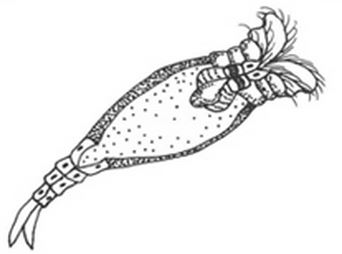
Rotifers: The most common animals in the wastewater are rotifers. These microscopic animals feed on bacteria or algae or even microbes.
The body of a rotifer consists of three parts, the head (with cilia to bring in the food) a trunk, and a tail or foot it uses to attach itself.
Rotifers can reproduce sexually and lay eggs.
Except for their eyespot, rotifers are colorless.
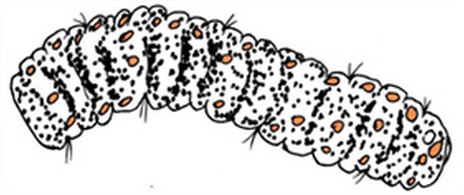
Bristle Worms: These long, segmented worms have bright orange or pink spots. They reproduce by budding at a particular segment. They use their bristle-like setae to move. These animals are the largest animals in wastewater and can be as large as one quarter of an inch long.
Please note that this information was adapted from the Albuquerque Bernalillo County Water Utility Authority.







